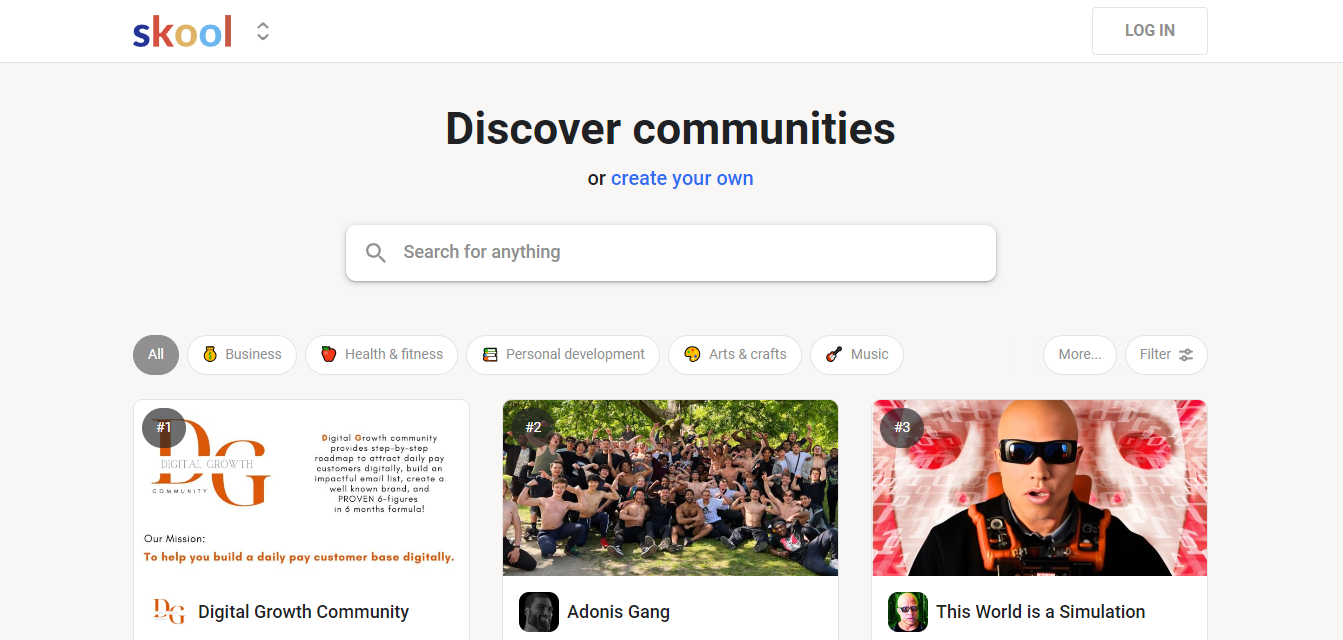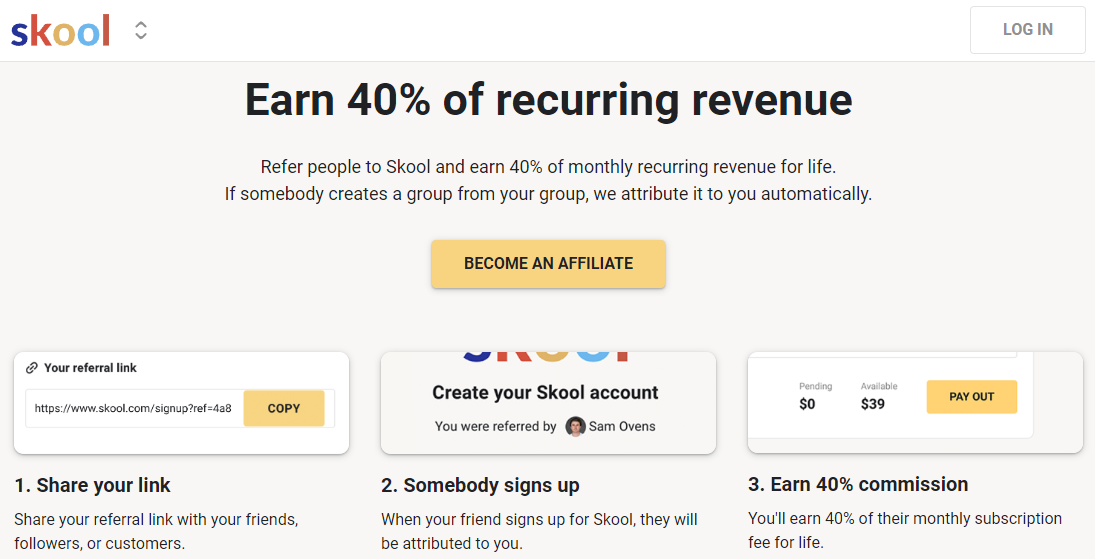The area feature has actually been Skool’s main focus when developing brand-new attributes. Its interface resembles a Facebook team feed and permits admins and participants to make articles with message, video, polls, links and GIFs.
The system also consists of gamification performances to encourage trainees and facilitate connections. These consist of leaderboards, degrees, factors and incentives to enhance engagement.
Course production devices
Skool enables you to develop web content using its program creation tools, which is an excellent way to construct your own courses. The tool offers a WYSIWYG interface, so you can see just how your content will search for students as you are developing it. It also supplies the ability to add a series of multimedia properties, including video clips and audio documents. It also uses a drag-and-drop editor for constructing your lessons.

Among the distinguishing attributes of Skool is its community-building functionality, which allows customers to interact with each other via a Facebook-like interface. This is useful for constructing a sense of neighborhood amongst trainees, coaches and professionals. It also uses a leaderboard that rewards top contributors. This is a fantastic method to get new members to join your neighborhood and remain engaged.
The system is easy to use and can be used by anyone. It is available in numerous languages and is made to service smart phones. Skool can be made use of by small teams of writers with simple layouts, or by larger companies. However, the tool lacks some vital features, such as assessment tools, which can aid track finding out impact and support student success. It likewise does not have a robust workflow management system, so it can be hard to handle team assignments. This is a downside for several business, as it can bring about prolonged hold-ups in releasing content.
Community-building capabilities
The community-building performances on Skool allow you to produce an appealing, welcoming atmosphere for your members. You can host one-off courses, develop group occasions and article Q&A calls to urge communication and engagement. The platform additionally enables you to develop degrees for your neighborhood participants and reward them with perks like complimentary weekly accountability calls or Synthesizer profile themes when they reach specific degrees of engagement.
This is a great way to maintain engagement and motivate your area to keep growing. It also assists you deliver more value to your participants by offering new material regularly. You can additionally create an area schedule with upcoming group calls, in-person occasions and other crucial days to aid your audience stay notified. The neighborhood calendar will instantly convert the moment to your member’s regional timezone, which makes it much easier for them to keep in mind and access.
Other functions consist of the ability to chat with various other participants, comply with posts, get notices in-app and via e-mail and song choices. Customers can even subscribe to email digests to obtain a detailed summary of all the current blog posts on their feeds. Additionally, the platform supplies detailed analytics and insights for area leaders to enhance their material strategy.
Who Is The CEO of Skool
Skool includes a community-building element that makes it stand out from various other systems. Its primary user interface looks comparable to a Facebook group feed, and it enables customers to develop conversations and share web links, videos, GIFs and Who Is The CEO of Skool. Individuals can additionally comment on each other’s articles and register for them for brand-new replies. The system’s gamification elements, like factors and leaderboards, boost engagement and motivate participants to create high-value material.

One more terrific function of Skool is its schedule section. Utilizing this, community members can schedule Zoom conferences, YouTube livestreams, or other occasions. The calendar shows the time of these events in each member’s local time area, so they can easily keep track of them.
Besides the gamification components, Skool additionally offers a user friendly content editor. The editor enables users to insert YouTube video clips, GIFs, surveys, activities and web links in their messages. Moreover, the web content can be organized right into areas and categories to maintain discussions and remarks arranged.
Last but not least, Skool’s analytics and insights feature offers community leaders with valuable insights right into their members involvement levels, content performance and various other essential information. This information helps neighborhood leaders and educators make informed decisions to improve the total knowing experience. This is a crucial tool for any kind of on-line area.
Individual involvement
Skool includes a structured easy to use interface, which permits participants to browse the platform quickly. It also helps them concentrate on the content and community without the distractions of unnecessary intricacy. This simplifies the procedure of connecting with others and ensures that the content remains appropriate to their growth goals. The platform sustains a variety of community engagement features, consisting of forums and threaded conversations, along with real-time events and workshops. These tools foster vibrant neighborhood discussion and promote the development of a knowing setting.
The gamification facet of Skool aids to urge member engagement and enhance the probability that users will go back to the system. It supplies a range of rewards, such as points, badges and leaderboards, that incentivize participants to contribute to the community. Along with these attributes, Skool also has a calendar that can be utilized to arrange and handle area events. This attribute allows creators to set up reoccuring events and restriction access to certain participants, such as those that are at a certain level in a course or Who Is The CEO of Skool.
One more fantastic function of Skool is its rich participant profiles, which resemble Instagram feeds and are designed to aid participants get in touch with one another. These accounts include a participant’s fundamental information, their degree (which is displayed on their account photo), the groups they belong to and their everyday aesthetic task graph.